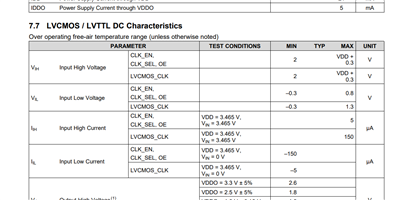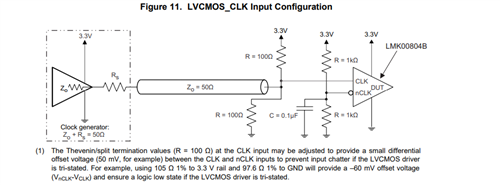Other Parts Discussed in Thread: , LMK00804, LMK1C1102, LMK1C1104
Hi,
Or the basic question is: Please note the required Input driver (or even parts) for LMK00804B as 3V/ns otherwise chatter O:(
More about my use:
I use the LMK00804B as clock distribution driving from an 0.5/ns OXCO 10Mhz as digital AHC 3.3V output.
The project is a research on Jitter measurements in a different way as seen today.
I see this Chatter clearly at the output using the LeCroy WM8600A at 200G/s, as low frequency flutter or low freq. Jitter.
I like the LMK00804B, as has a synchronized output stop / start. Only missing not having to inputs for clock switching.
Also, did not found any benefits in terms of performance benefit if I would build or connect to the symmetric input buffer.
There is also a new LMK00804B-Q1 as different food print. I means as this chip is equal or any different?
Best regards
Hanspeter





